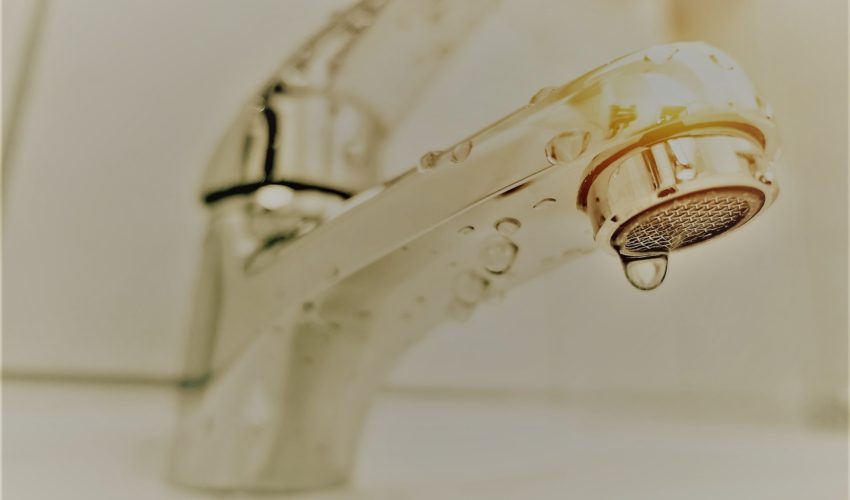Confirmed Methods for Addressing Low Water Pressure in Your Home
Confirmed Methods for Addressing Low Water Pressure in Your Home
Blog Article
This great article directly below in relation to 4 Ways to Troubleshoot Low Water Pressure is relatively insightful. Give it a try and make your own findings.

Low tide pressure in your house can be a discouraging trouble, impacting every little thing from showering to cleaning recipes. If you're experiencing weak water circulation, there are several possible reasons and options to explore. In this overview, we'll discuss typical reasons for low tide pressure and functional actions to address the issue successfully.
Intro to Low Tide Pressure
Low tide stress occurs when the circulation of water from your taps, showers, and other fixtures is weaker than usual. This can make daily jobs more tough and less efficient. Recognizing the root causes of low tide stress is essential to discovering the appropriate solution.
Common Root Causes Of Low Water Pressure
Faulty Stress Regulatory Authorities
Pressure regulatory authorities are accountable for preserving consistent water pressure in your house. If they malfunction, it can lead to low water pressure or irregular circulation throughout your home.
Municipal Supply Of Water Issues
Often, the trouble lies outside your home. Municipal water system problems, such as main line leakages or upkeep work, can briefly reduce water pressure in your location.
Pipeline Obstructions
Over time, pipes can end up being obstructed with natural resource, debris, or debris, restricting the flow of water. This is a common issue in older homes with galvanized steel pipes.
Corrosion
Corrosion within pipelines can lead to leakages and minimized water stress. Rust build-up can tighten water flow, especially in maturing plumbing systems.
Exactly How to Identify Low Water Pressure
Checking Pipelines
Check visible pipelines for signs of leakages, rust, or clogs. Pay attention to any type of uncommon noises, such as knocking or rattling pipelines, which could suggest concerns within the plumbing system.
Consulting with a Plumber
If you're not able to identify the cause of low water pressure, think about employing an expert plumber to conduct a complete evaluation. They can recognize underlying problems and advise proper remedies.
Examining Taps and Fixtures
Beginning by testing the water stress at various faucets and components throughout your home. If the concern is isolated to specific locations, it may indicate localized problems.
DIY Solutions to Repair Low Tide Pressure
Flushing Water Heater
Debris buildup in the water heater can limit circulation and reduce effectiveness. Purging the storage tank occasionally helps get rid of debris and maintain optimum efficiency.
Examining Stress Regulatory Authority
Guarantee that the pressure regulator is functioning correctly. Adjusting or changing the regulator can assist restore appropriate water pressure throughout your home.
Cleaning Aerators and Showerheads
Natural resources can accumulate in aerators and showerheads, minimizing water flow. Remove and clean these parts frequently to enhance water stress.
Cleaning Clogs in Pipeline
For small clogs, attempt using a plumbing snake or chemical drainpipe cleaner to clear obstructions in pipes. Be cautious when using chemicals and follow safety standards.
When to Call a Specialist Plumber
If DIY efforts fail to resolve the problem or if you suspect substantial plumbing problems, it's ideal to look for assistance from a certified plumber. They have the know-how and tools to resolve intricate problems safely and properly.
Safety Nets to Keep Water Pressure
Mounting a Pressure Booster
Think about setting up a pressure booster pump to boost water pressure in locations with constantly low flow. This can be specifically helpful for multi-story homes or properties with high-demand components.
Surveillance Water Usage
Bear in mind water usage habits and prevent overtaxing the plumbing system. Straightforward adjustments, such as staggering showers and laundry loads, can help maintain sufficient water stress.
Routine Upkeep
Set up regular maintenance for your plumbing system to avoid problems such as corrosion, leaks, and obstructions. Addressing small issues early can assist avoid even more considerable repair services later on.
Verdict
Dealing with low water stress can be frustrating, however identifying the underlying reasons and executing ideal options can recover optimal flow throughout your home. Whether it's cleansing aerators, examining pipes, or consulting with a plumber, taking positive steps can make sure a constant supply of water for your daily needs.
FOUR WAYS TO FIX LOW WATER PRESSURE NOW
Turning on a shower or faucet only to find the water comes out in a sad, slow drizzle is never a good feeling. How exactly are you supposed to wash a pan or take a quick shower when it takes 10 minutes just to rinse off a little soap? The good news is that when your water pressure is bad, there's always a cause: typically one that can be easily fixed. Here are some of the most common causes of low pressure and what you can do to fix the issue:
DEBRIS AND MINERAL DEPOSIT BUILDUPS
If you notice low water pressure from just one or two of the fixtures in your house, the problem likely has to do with debris buildup. Water is full of minerals and other debris, all of which can accumulate in your pipes and on your fixtures. This can cause a blockage that affects how much water flows through. To fix this, try filling a small plastic bag with white vinegar, and use a rubber band to hang it around your showerhead or faucet. Let the head of the fixture soak for a few hours, and the vinegar should loosen the deposits.
WATER LEAKS
Leaks are another common cause of low water pressure. If water is flowing out of your plumbing through a hole or crack before it can reach your fixture, the pressure coming out of the faucet or showerhead will be lower. A plumbing professional is your best bet for finding and repairing a leak in your water supply pipes.
Leaks are another common cause of low water pressure. If water is flowing out of your plumbing through a hole or crack before it can reach your fixture, the pressure coming out of the faucet or showerhead will be lower. A plumbing professional is your best bet for finding and repairing a leak in your water supply pipes.
A VALVE ISSUE
If you have low water pressure throughout your home, check your main shut-off valve to make sure it's completely open. You may also want to see if there's a pressure-reducing valve installed. If there is, have a plumber help you adjust the settings to get the pressure you're looking for.
OTHERS USING WATER
Believe it or not, your low water pressure could be caused by your neighbors. If you notice low pressure at certain times of day, it may be because you and the people living next to you have similar schedules - when everyone is showering at the same time, the pressure will be lower in every home. Low pressure throughout the neighborhood may also be caused by an issue with your municipal water supply. If that's the case, call the supplier to see if they're working on the issue.
https://www.rotorooter.com/blog/water-leaking/low-water-pressure-fixes/

Do you enjoy reading up on Dealing with Low Water Pressure in Your Home? Place feedback down below. We will be delighted to listen to your thinking about this posting. We are looking forward that you visit us again in the near future. Sharing is good. Who knows, you may very well be doing someone a favor. Thanks a lot for being here. Return soon.
Book Your Appointment Report this page